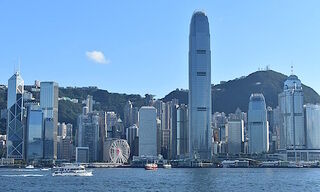MUFG: Limited «Fright Capital» From Hong Kong to Singapore
Capital flight of $6 billion – at most – left from Hong Kong to Singapore between May and October due to ongoing political unrest.
This amount of «fright capital» represents less than 0.4 percent of Hong Kong’s HK$13.73 trillion ($1.76 trillion) in bank deposits as of October-end, suggesting an amount the does not yet warrant panic, according to a report by Mitsubishi UFJ Financial Group.
«Our assessment remains that the scale of outflows to date has yet to be large enough to warrant serious concern,» said Cliff Tan, MUFG’s East Asian head of global markets research, in the report. «We believe the unfortunate violence of November 2019 will further push more capital out of Hong Kong.»
«Well-Behaved» Money Market Rates
The report also discusses the broader impact to the banking system, noting that overall flows have resulted in «well-behaved» money market rates despite ongoing fears. The 3-month Hong Kong interbank offered rate (Hibor) stands around 2.36 percent, up from 2.08 percent at the end of April – a far cry from the 16.57 percent reached during 1998’s speculative attack against the currency peg.
«The bottom line is Hong Kong is a major world financial market, so while protest outflows matter, so do a lot of other outflows and inflows, and if flows are more balanced than occasional market fears, the result is a fairly well-behaved Hibor despite fears,» Tan said, marking 4 percent Hibor as the level for markets to start worrying.
Still Strong
Despite harsh rhetoric from Beijing authorities against Hong Kong, the city continued to demonstrate its critical role as a financial center even during such a difficult period, best evidenced by Alibaba’s $12.9 billion raised in its secondary offering last month.
«It would probably not be in the mainland's own interests to allow Hong Kong to atrophy and lose its international financial center status,» Tan added. «Hence, Chinese capital might reasonably be expected to act as a countervailing flow in the event of fright capital leaving Hong Kong.»


























